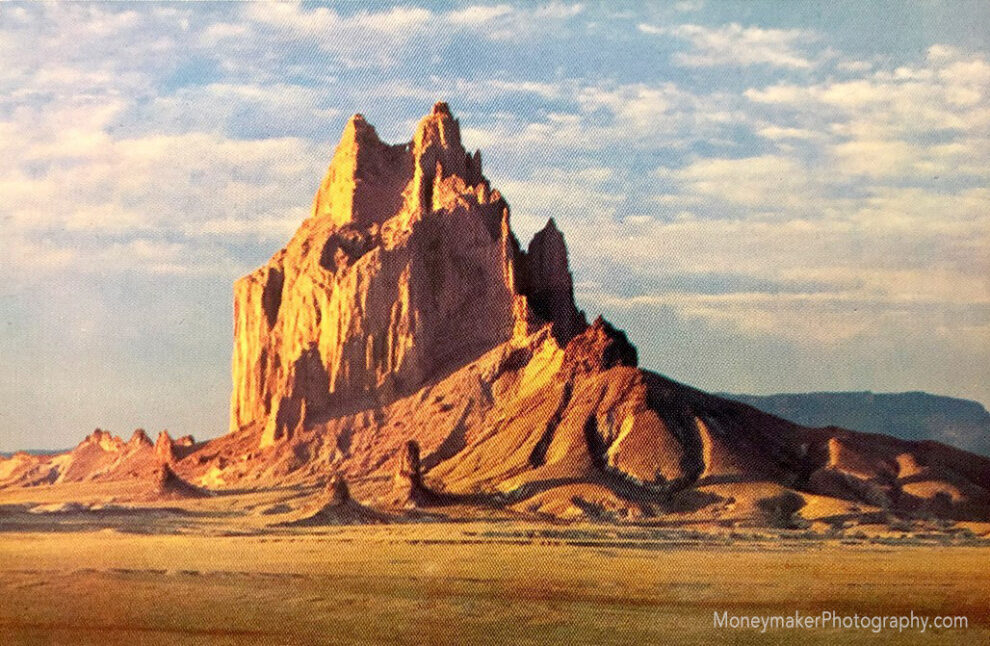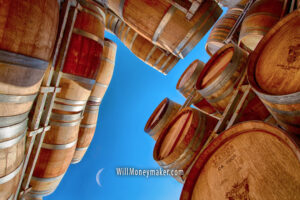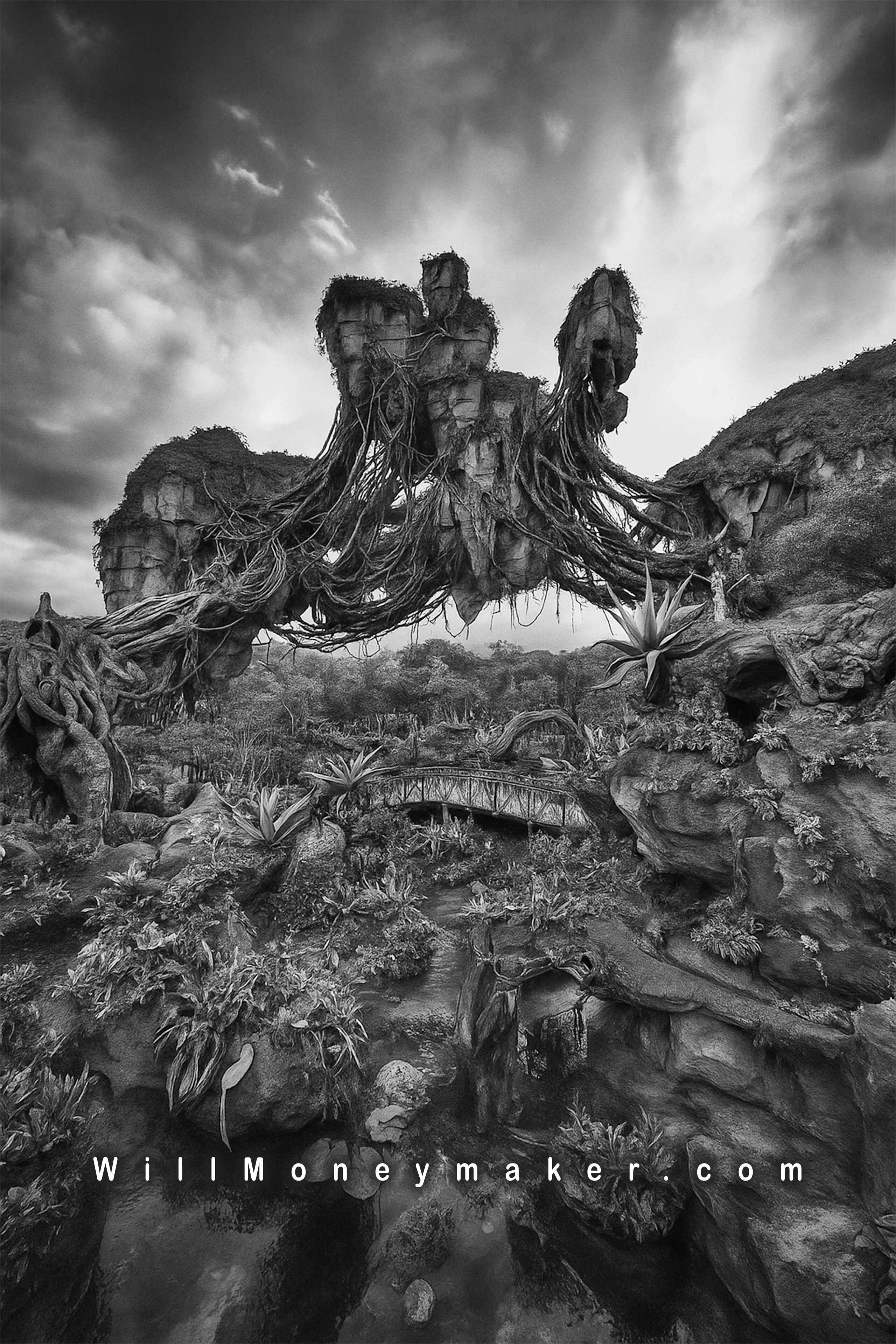Shiprock, New Mexico… (Postcard from my collection) Rising 1,400 feet above the desert floor, this volcanic lug is part of a dyke running for miles and the lofty formation is said to look an old four-rigged sailing vessel. View includes Lukachukai Range in the Distance. Photo by David Muench
Postcards aren’t something we always pause to consider, but for photographers, they can be an incredibly valuable resource. For some, postcards are all about collecting memories — places you’ve been or places your loved ones have sent cards from. And in this, there is a lot of artistic inspiration to be had. But it’s not necessarily all about the memories! Many, if not most postcards feature photography prominently, and since they’re so often meant to be a single, memorable image, this in and of itself is a fantastic way to get ideas that will fuel your own art.
Myself, I enjoy collecting postcards as a way to inspire my own photographic work. Over the years, I’ve found them incredibly valuable for this purpose. Let’s take a deeper look at this so you can see what I mean!
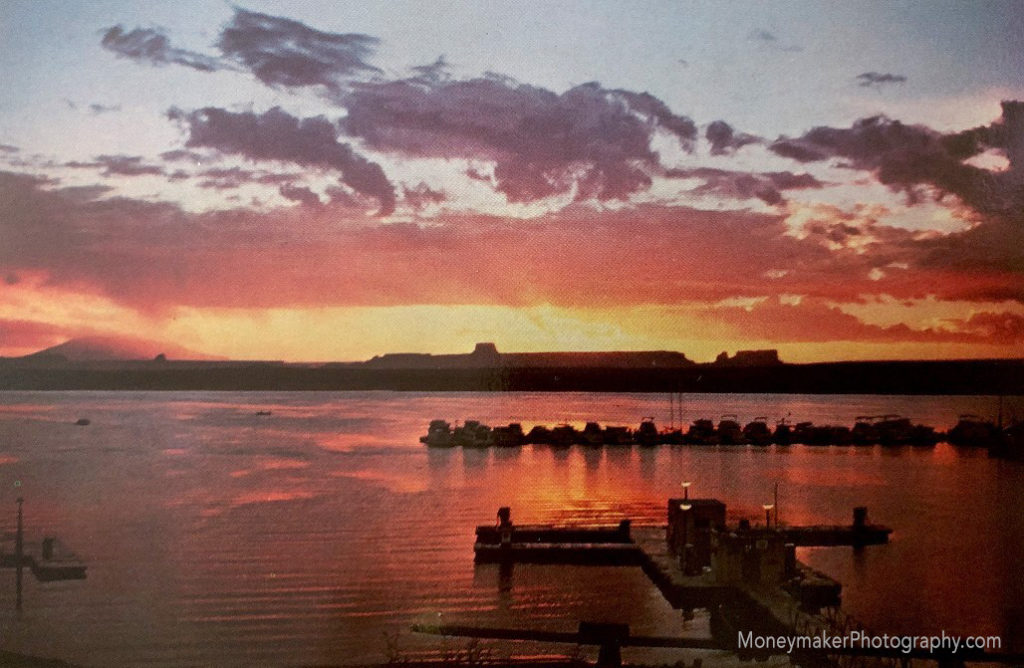
Types of Postcards
In the first place, postcards are an incredibly diverse medium. Anything you can imagine, you’re likely to find it. Not just photographs, but paintings, quotes, lettering and so much more. Though for the purposes of this discussion, we’ll stick with the photographic postcards. Even here, there is a lot of diversity among types, genres and subjects.
Landscapes feature among some of the most prominent postcard subjects. In tourist areas especially, these are easy to find — country vistas, city skylines and everything in between. There are also iconic buildings, landmarks and scenes meant to give a showcase into what a given area is known for. As an example, images of Amish buggies and other Amish scenes are popular in Amish Country. But, too, there are postcards not designed around a given area. Many are meant to simply display a piece of art, be it a famous print or painting, or something that features flowers, portraits, abstract photography and so on. There is really a lot here that you can pick and choose from to help inspire your own art.
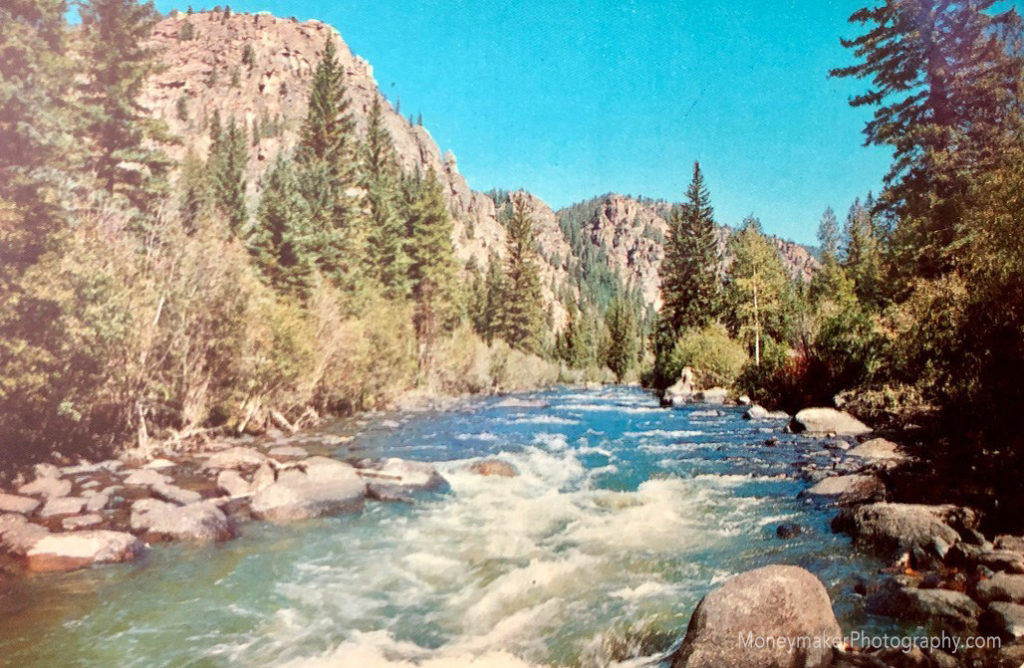
What You’ll Gain from Postcards
There are so many things to get from postcards. If you’re one to collect them on your travels, then they’re a wellspring of memories, and thus, old ideas that you can revisit anytime you feel the need. Sometimes just the nostalgia alone is enough to spark inspiration.
Standard postcard size is the A6 size, which is 5.8 x 4.1 inches — a bit smaller than a 5×7 photograph. What this means is that postcards are almost always designed to display the “best shot.” There simply isn’t enough room to feature multiple images, which is why so many display a single image prominently. This can help you in a couple of key ways: First, they’re a good resource for simply viewing strong single images. Enjoy them, and you’ll soon learn what it takes to create strong images of your own. Too, they’re a fantastic source of inspiration if you’d like to create similar images of the same subjects.
And apart from that “best shot,” they’re a good way to explore a given subject a little deeper. Let’s say that you have a postcard of the Chicago city skyline. You can explore the image to see what details may be of interest. Likely, there are buildings or landmarks that you might like to take a closer look at, or maybe the image inspires to you create photographs of city lights at night. Upon closer inspection of these photographs, I almost always find it worthwhile to move around, taking shots from different angles or moving in closer to various details. Like this, you can really get into the scene displayed in the postcard and find your own ideas.
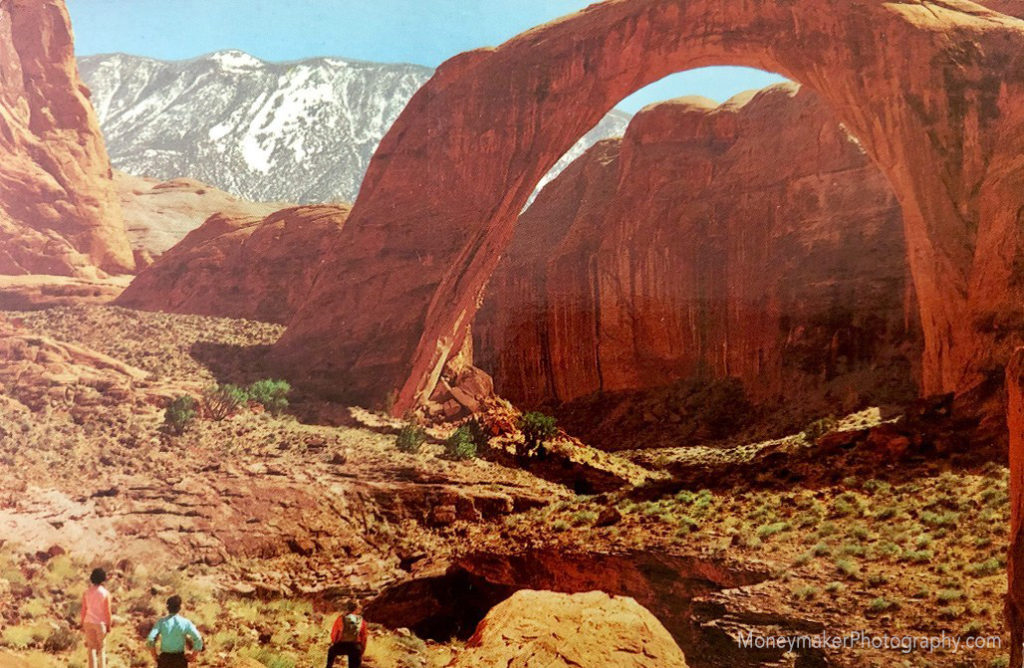
How to Collect Them
Creating a collection of postcards is incredibly easy. You need only purchase the ones that catch your eye. And they’re available just about everywhere, too. Check gas stations, information centers, museums and other attractions. They can even be purchased online, and these days, it’s simple to create your own if you’d like to add a few personal images to your collection. What’s more, unlike most things related to photography, postcards are very inexpensive.
And there are lots of wonderful reasons to collect them, too, even apart from the potential for inspiration. Postcards are a physical piece of art, not digital, so you’ll have concrete prints to look at. Another thing that makes them especially special is that, in our homes, we only have so much wall space to display framed prints. Even if you make a hobby of collecting photographic prints, at a certain point, you’ll have dozens stashed in a closet where they are difficult to enjoy. It’s just not so easy to pull out framed or matted prints to look through them, and storing them safely can be a challenge. Postcards, however, are much, much easier to collect and organize.
So feel free to pick whatever organizational system suits you. For some people, this is the old-fashioned shoebox, which can be pulled out whenever needed so you can thumb through postcards at your leisure. Others enjoy taking a few of their favorite postcards and framing them somewhere that they’re easily viewable. Along these lines, you can even create a display wall with strings or wires, using clothespins to hang various postcards so that you have a display you can change around as much as you like. Albums are an option, too, and there are a wide variety to choose from including albums specifically designed for postcards to regular photo albums and scrapbooks, if you feel the need to do something crafty. The potentials for housing your collection are nearly limitless.
Postcard collections can truly be a rewarding hobby. Many people collect them simply to enjoy them. And where we photographers are concerned, there is much more than simple enjoyment to be had! I know that my own collection has helped to inspire dozens, if not hundreds of images, and that alone makes this a more than worthwhile venture.


